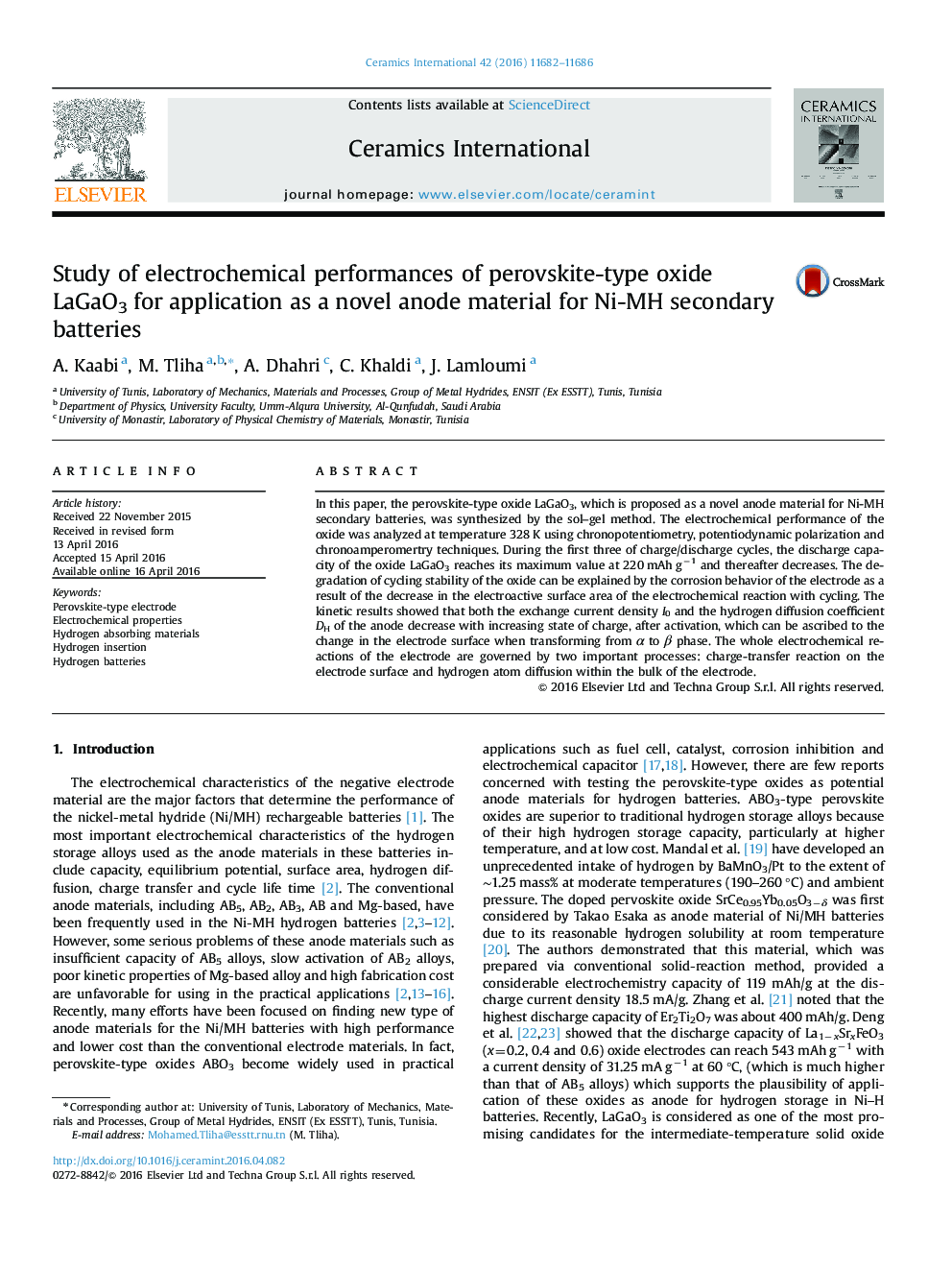| Article ID | Journal | Published Year | Pages | File Type |
|---|---|---|---|---|
| 1458814 | Ceramics International | 2016 | 5 Pages |
In this paper, the perovskite-type oxide LaGaO3, which is proposed as a novel anode material for Ni-MH secondary batteries, was synthesized by the sol–gel method. The electrochemical performance of the oxide was analyzed at temperature 328 K using chronopotentiometry, potentiodynamic polarization and chronoamperomertry techniques. During the first three of charge/discharge cycles, the discharge capacity of the oxide LaGaO3 reaches its maximum value at 220 mAh g−1 and thereafter decreases. The degradation of cycling stability of the oxide can be explained by the corrosion behavior of the electrode as a result of the decrease in the electroactive surface area of the electrochemical reaction with cycling. The kinetic results showed that both the exchange current density I0 and the hydrogen diffusion coefficient DH of the anode decrease with increasing state of charge, after activation, which can be ascribed to the change in the electrode surface when transforming from α to β phase. The whole electrochemical reactions of the electrode are governed by two important processes: charge-transfer reaction on the electrode surface and hydrogen atom diffusion within the bulk of the electrode.
